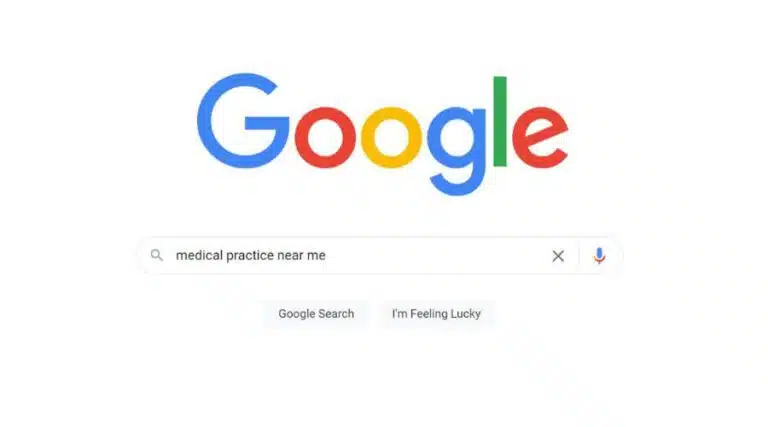
75% of consumers admit to making judgments on a company’s credibility based on the company’s web design. – Stanford Web Credibility Project
The whole purpose of a medical website is to attract new patients and build relationships with existing ones – so if your site is starting to seem stale, it’s probably time to redesign your website and refresh your medical practice’s home on the web.
Depending on how you choose to approach a website redesign, there are several factors you may need to keep in mind as you develop a website redesign strategy. The following are eight key signs which indicate it’s time to make those changes and to optimize and redesign your medical practice website for your current and future patients:
#1: The Website Looks Outdated
Today’s tech-savvy patients use the internet to research and purchase a staggering number of goods and services, to evaluate quality and cost, and to read about topics that are pertinent to their daily lives.
If a your medical practice’s website looks old and lacks the excellent visual elements of other websites — such as current, sharp images and intuitive navigation— patients visiting your site likely will look elsewhere. You may be surprised at how easy it is to impress your patients and meet their expectations through a fresh medical website redesign.
#2: The Website Isn’t Mobile-Friendly
Your patient or potential patient shouldn’t encounter hard-to-navigate tabs and menus when viewing your website on a smartphone. For most Americans today, the smartphone is their go-to device for online search and communication. Your website visitors are always looking for a positive user experience, so ensuring your website is easy to use on mobile to potential customers and patients is a key element to consider.
If your website isn’t oriented and sized properly to work on a mobile device, the patient will not be able to easily find the information they need about you and your medical services.
Put yourself in your patient’s shoes when assessing the user-friendliness and UX design (user experience) during your website redesign project.
#3: The Website Lacks Interesting and Helpful Content
Outstanding doctor website design must include useful, attractive content that helps to explain your products or services. It must be composed of current, detailed, and focused information to educate new and prospective patients on your services, hours, and the various health conditions you treat.
Outdated or unhelpful content compels website visitors to look at other websites. Interestingly, the Pew Research Center reports that caregivers – more than any other type of internet user who is looking for medical information – tend to research information on medical practice websites and other online sources.
So, your content must be correct, clear, fresh, sufficient, and easily accessible. Great content is instrumental for website performance.
#4: Contact Information Is Missing or Links Don’t Work
If it is not easy to find your medical practice’s address and phone number on the website, then patients will feel frustrated and will move on. Be sure that your medical website redesign has interactive features such as buttons or clickable links to request an appointment, ask a question, and make a phone call.
#5: People Cannot Find You Online
If your website is not populated with accurate and relevant keywords and other signals to quality – such as backlinks with other web pages – your website will not rank well on a Google search. Website best practices that help you be found in Google search is called search engine optimization (SEO).
While you may be a highly regarded specialist in your area, your website link may appear far down in search results because your website doesn’t have fresh and relevant content – and the Google servers are indeed sensitive to whether a site is stale or updated. Google will automatically reward sites that have new and valuable content about your specialty with higher rankings in a user’s search of the topic. Tracking organic progress on your existing website can be done through Google Analytics or Google Search Console, and can even be used to track user behavior on a website after a redesign to see what progress you’ve made!
#6: The Website Was Made with Old Technology
The most notorious website error is the 404 error, telling the user that the page doesn’t exist. If this happens with any links or pages on your site, then this broken functionality will give a bad first impression of the practice.
Likewise, if a patient wants to navigate around your site but it ends up being difficult, then this can cause frustration.
#7: The Website Loads Too Slowly
In our age of immediate gratification, your target audience will click elsewhere if a website doesn’t load immediately. Your home page and every other feature of your website must always be responsive to all users. If your content management system, or CMS, isn’t optimized properly, slow load times could be driving away potential patients.
#8: The Website Isn’t Secure
Did you know that “https” in the beginning of your web address (URL, or uniform resource locator) means that the transmission of patient information will safe and secure on your practice website?
Without this indicator of trusted SSL security, your clients or potential clients will be leery of your website. Plus, Google is now giving low rankings to sites that do not begin with https (the “s” at the end stands for “secure”).
Confirming that your website is secure is also a best practice for compliance with healthcare regulations. Checking for all patient data security issues should be part of your medical website design process.
Start Your Website Redesign Project Today
Here at iHealthSpot Interactive, our team of marketing and medical website design experts can help lead your medical website redesign project. Start now to create a fresh look, updated content, and the user-friendly functionality that patients now expect from doctors’ websites. Make a list of the things your new website needs, and then contact us for a free design and market evaluation.
An updated online presence will reflect the world-class quality of your medical care – and attract new patients to your practice. Call us today for a free consultation with our medical website design team at (877) 674-7315 or fill out our online contact form. We look forward to helping you impress your new and existing patients!





